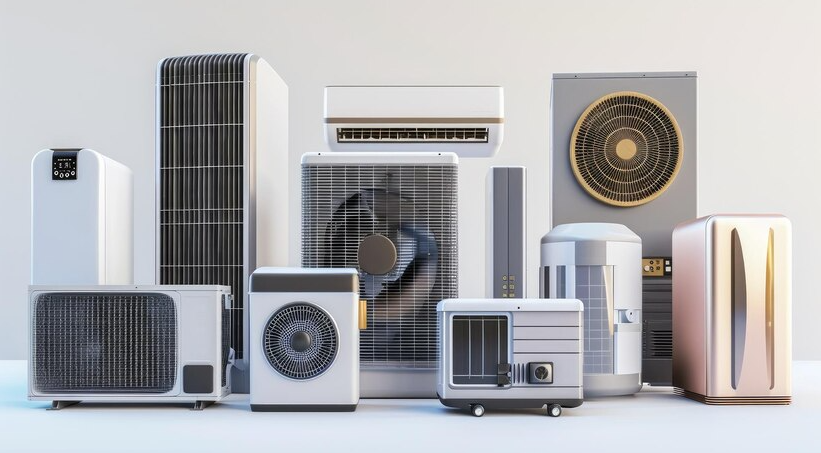If you have an HVAC system, you’ve likely heard of R-410A refrigerant—but how much do you really know about it? Whether you’re a homeowner looking to upgrade your system, curious about refrigerants, or wondering about upcoming changes in the HVAC industry, we’re here to break it all down for you.
At Elite Air & Heat of Summerville, we believe that an informed homeowner is a smart homeowner, and we’re here to guide you through everything you need to know about R-410A refrigerant.
What is R-410A Refrigerant?
R-410A is a hydrofluorocarbon (HFC) refrigerant used in modern air conditioning and heat pump systems. It was developed as a more environmentally friendly alternative to older refrigerants like R-22, which contributed to ozone depletion. First introduced in the 1990s, R-410A quickly became the standard refrigerant for residential and commercial HVAC systems due to its efficiency, safety, and eco-friendliness.
Unlike its predecessor, R-22 (Freon), R-410A does not contain chlorine, making it non-ozone-depleting. This makes it a more sustainable option that aligns with global environmental goals. However, as the industry continues to evolve, new refrigerants are being developed to meet even stricter environmental regulations.
Why Was R-410A Chosen to Replace R-22?
Before R-410A became the go-to refrigerant, most HVAC systems used R-22 (commonly known as Freon). However, R-22 was found to be harmful to the ozone layer due to its chlorine content. In response, the U.S. Environmental Protection Agency (EPA) and international organizations began phasing out R-22 through the Montreal Protocol, a global agreement aimed at reducing ozone depletion.
Here’s why R-410A became the perfect replacement:
Better for the Environment – R-410A does not contribute to ozone depletion.
Higher Energy Efficiency – Systems using R-410A operate at higher pressures, improving efficiency and performance.
Better Cooling Performance – HVAC units using R-410A cool homes faster and maintain more consistent temperatures.
Increased Equipment Lifespan – R-410A systems use more durable, heat-resistant components, reducing wear and tear.
Since January 1, 2020, the production and import of R-22 have been banned in the U.S., making R-410A the dominant refrigerant for residential and commercial air conditioning systems.
How Does R-410A Work in an HVAC System?
R-410A plays a crucial role in your air conditioning system by absorbing and releasing heat to regulate indoor temperatures. Here’s a simplified breakdown of how it works:
- Evaporation (Cooling Process) – The refrigerant absorbs heat from inside your home, turning it from a liquid into a gas.
- Compression – The gas is compressed by the compressor, increasing its temperature.
- Condensation (Heat Release) – The hot refrigerant gas travels to the outdoor unit, where it releases heat and returns to a liquid state.
- Expansion – The liquid refrigerant passes through an expansion valve, reducing pressure and temperature before starting the cycle again.
This process repeats continuously, keeping your home cool and comfortable!
Is R-410A Being Phased Out?
Although R-410A is a vast improvement over R-22 in terms of ozone protection, it still has a relatively high global warming potential (GWP). Because of this, the EPA and other regulatory bodies are working toward replacing R-410A with next-generation refrigerants that have an even lower environmental impact.
Key facts about the phase-out:
- The U.S. is gradually reducing R-410A use under the American Innovation and Manufacturing (AIM) Act, which aims to reduce HFC production by 85% by 2036.
- New refrigerants, such as R-32, R-454B, and R-466A, are being developed as eco-friendly alternatives.
- If you have an R-410A system, you don’t need to worry—it will remain serviceable for years, and technicians can still access supplies.
At Elite Air & Heat of Summerville, we stay up to date with all HVAC industry changes, so if you’re concerned about the future of refrigerants, we’re happy to provide guidance!
How to Maintain Your R-410A System
Proper maintenance ensures that your HVAC system runs efficiently, uses less energy, and lasts longer. Here are a few essential maintenance tips for R-410A-based systems:
- Change Air Filters Regularly – Dirty filters reduce airflow, making your system work harder.
- Keep Coils Clean – Evaporator and condenser coils can collect dirt and debris, affecting heat exchange efficiency.
- Check for Leaks – Low refrigerant levels can indicate a leak, which reduces cooling efficiency and can damage components.
- Schedule Professional Maintenance – Regular check-ups by HVAC professionals help identify potential issues before they become costly repairs.
If you notice poor cooling performance, strange noises, or higher energy bills, it may be time for a system check-up. Our team at Elite Air & Heat of Summerville is always ready to help!
Can You Retrofit an R-22 System to Use R-410A?
If you have an older HVAC unit that still runs on R-22, you might be wondering if you can convert it to use R-410A. The short answer is no—R-22 and R-410A systems are not compatible due to differences in pressure and oil type.
R-410A operates at higher pressures, requiring different components and system design.
- R-22 systems use mineral oil, while R-410A systems use synthetic POE oil, making them incompatible.
- Retrofitting would require major modifications, often making a full system replacement the more cost-effective option.
If your R-22 system is failing, it’s best to upgrade to a new, energy-efficient HVAC unit that’s designed for R-410A or newer refrigerants.
Need HVAC Service? We’ve Got You Covered!
At Elite Air & Heat of Summerville, we specialize in R-410A system maintenance, repairs, and installations. Whether you need routine service, a refrigerant check, or are considering an upgrade, our expert technicians are here to help.
Call us today to schedule an appointment and keep your home comfortable year-round!
Stay cool, stay comfortable, and trust the experts at Elite Air & Heat of Summerville!

